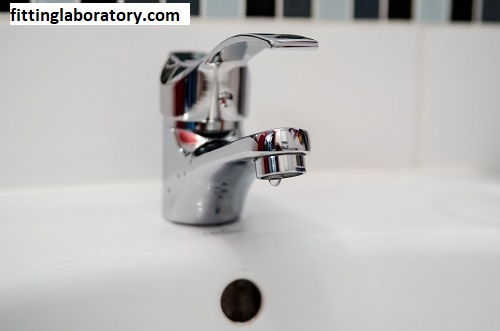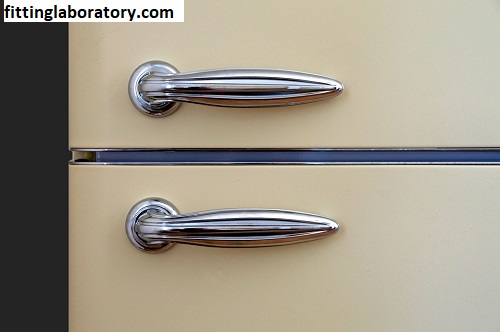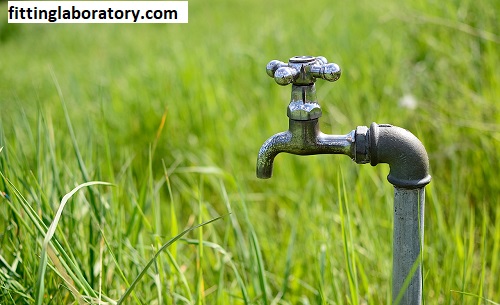Fittings: A Fully In-Depth Guide on Knowing and Selecting the Right Fitting
Camlock Fittings:
Camlock Fittings otherwise known as cam and groove fittings, are significant components and have wide-ranging utility uses in the industry for fluid and material handling systems. Fittings are one of the most versatile fittings that use ease of use, fast connecting, and secure sealing. Whether your job is in agriculture, construction, chemical processing, or in any other field where liquids, gases, and powders are transported, a camlock fitting ensures the whole process efficiently and safely completes its work.

In this comprehensive guide, we will understand what camlock are, how they work, the available types, their uses, and how to select, install, and maintain them properly. We will also answer some of the frequently asked questions to further in-depth our understanding of this very important component.
What Are Camlock Fittings?
Camlock Fittings:
Camlock are quick-connect couplings used for easy and secure connections as well as disconnections of hoses and pipes for liquids, gases, or dry material. Typically, a male adapter is affixed to the hose, and a female coupler is usually attached to a pipe or another hose and a mechanism involving a series of cams and locking lever that locks them together. This mechanism is very simple yet effective for securely fastening the two parts on to each other during operation so that there cannot be any leakage or spill.
These fittings are highly valued for convenience, speed and reliability in applications requiring frequent connections and disconnections. Camlocks, owing to their strong design, can sustain heavy pressure environments and thus become perfect for various industrial applications.
Working of Camlock Fittings:
Camlock Fittings:
Fast connecting mechanism is the prime working mechanism of the fittings. The two elements that the camlock system consists of are; Male Adapter: this is a description of an internal or external threaded connection. It is mainly considered to be the attaching part to the hose or pipe and is usually manufactured with a smooth or serrated hose tail.
Coupler Female A female coupler will also have a groove, which mates with the male adapter. It also has locking arms or cams that clamp down around the male adapter when it is pushed together. The arms are usually metal and can be engaged by pushing the coupler over the adapter. The arms snap down and lock the fitting. Quick-action lock causes tight seals with no leaks between the fittings.
It would thus only require pulling up the locking arms or cams on the coupler to disengage it from the male adapter to disconnect the fittings. With such simplicity and efficiency in design, fittings can thus be considered one of the easiest to use, especially in cases where there is a need for repeated disconnections and reconnections.
Camlock Fitting Types:
Camlock Fittings:
In a variety of sizes and materials, and are available in multiple varieties depending on the application. Generally, the different types of fittings can be categorized depending on the design, size, and material.
1. By Design Type
- Type A: This is the most common type of a camlock fitting. It has a male threaded adapter which mates to a female coupler. These will commonly be used wherever threading is required to be secure.
- B: Female threaded coupler is adapted with a male adapter. Type B fittings are widely used in hose-to-pipe connections where the tube needs to be threaded.
- C: These couplings have male camlock adapters. Also, they have a female coupler with a hose shank and are applied in hose-to-hose applications.
- Type D: In its construction, Type D couplings have a male camlock adapter. They have a female coupler with threaded connection and find use when a tight threaded connection is necessary.
- Type E: In cases where the male adapter incorporates a hose shank and the female coupler has a thread, Type E camlocks are commonly used in hose-to-pipe or pipe-to-hose connections.
- Type F: Having a male adapter with a female coupler featuring smooth hose tail, Type F fittings are usually used where the hookup requires greater flexibility or lesser tension against the connection.
2. Camlock Fitting Materials
Camlock Fittings:
There are various types of fittings in different materials related to precise working requirements. Some of the common materials used are as follows:
- Aluminum: These camlocks are highly light and resistant to corrosion; thus, they are used wherever water, fuel, or any liquid has to be worked with.
- Stainless Steel: Stainless steel camlocks are very robust and resistant to corrosion and high pressure. They, therefore, find their application in chemical processing, pharmaceutical, food production, among others.
- Brass: Brass camlocks are mostly resistant to corrosion, and thus, they are excellent for use in water or oil or gases; the brass fitting is rust and scaling-resistant.
- Polypropylene: Polypropylene camlocks are lighter in weight and more economical. Most of the low-pressure applications or chemical resistance can be used.
- PVC: PVC camlocks are largely used in applications with light duties. They display considerable resistance to several chemicals and are greatly used in the agricultural and food industries.
Uses of Camlock Fittings:
Camlock Fittings:
Camlock are employed for a wide scope of varied industries such as agricultural, manufacturing, construction, and chemical processing among many others. Common applications for fittings include the following:
- Agriculture: Camlock are mainly utilized in irrigation systems that transfer water to the concerned fields and fertilizer or other chemical transport.
Chemical Transfer It is used in the transferring of hazardous chemicals, oils and gases. The secure connections made by these fittings reduce leakages; a key element when volatile materials are involved.
Fuel Transfer Camlock are also mainly used in transferring fuel like diesel, gasoline, and many other hydrocarbons. These fittings ensure quick connecting on refueling and prevent spills during the transfer. - Food and Beverage: In food and beverage processing, fittings are employed for transferring liquid materials like milk, juice or oil. It is provided with a food-grade material that is manufactured maintaining hygiene standards.
- Water and Wastewater: Camlocks are used in water and wastewater transfer, particularly in pumping stations and water treatment facilities. It is very handy in replacing water or any fluid.
How to Choose the Right Camlock Fitting:
Camlock Fittings:
When selecting a camlock fitting for your application, there are few considerations to be undertaken:
1. Size
Size is essential when selecting the right size of fittings to match the diameter of the hose or pipe. Measure the inner diameter of the hose and the corresponding fittings to ensure proper connection.
2. Material Compatibility
Material used for the camlock fitting should be compatible with fluid or material that is to be transferred. If chemicals are transferring then the fittings that have to be made of stainless steel or brass because of their strength and other factors such as chemical resistance.

3. Pressure Rating
Camlock Fittings:
First, choose fittings that can withstand the pressure involved in your application. Some camlock are manufactured for high-pressure application, while others will be okay for low-pressure applications.
4. Temperature Resistance
Confirm that the chosen camlock fitting can tolerate the temperature range of the substances you intend to transport. For example, materials such as polypropylene may dehydrate at extreme temperatures while stainless steel is advisable in high-temperature conditions.
5. Locking Mechanism
There are different fittings and related locking devices. These are the locking lever and pin-locking. Select which of these types will best protect your application.
Installation and Maintenance of Camlock Fittings:
Camlock Fittings:
Camlock are not very difficult to be installed. They do not require a special tool, and the general process is described as follows:
Connect male adapter to the hose or pipe.
Connect the female coupler at the other end hose or pipe.
Plug in the two pieces and connect.
Secure the cam arms in to close the seal
To disconnect, lift the cam arms off the fittings
Maintenance
Check the cam arm for cracks and wear and corrosion. This should always be done under extreme conditions.
Lubricate the cam arms to prevent stickiness while engaging
Check the seal integrity of camlock
Change the cracked fitting right away, so there will be no safety hazard issues
Frequently Asked Questions About Camlock Fittings:
Camlock Fittings:
1. Are camlock fittings reusable?
Answer: Camlock can be reused if they are not damaged. Regular inspection and maintenance of these connections will prolong the time used with them.
2. Can Camlocks be applied to high-pressure systems?
Camlocks do have a variant suitable for high-pressure, especially those fabricated from stainless steel or brass. Look at the pressure rating given by the manufacturer before application.
3. Difference between a camlock and other quick-connect fittings?
The essence of the difference lies in the locking mechanism of the fitting. While fittings make use of cams to lock the coupler with the adapter, some other quick connect fittings have a push-pull or twist-lock mechanism used to do the same.
4. Can camlock fittings be used for the transfer of gas?
Yes, fittings can be used for the transfer of gas provided proper material is selected for an application; aluminum or stainless steel may be used.
5. How do I choose what size camlock fitting to use?
It is measured the same as if you were going to couple a hose or pipe. Take that measurement and match it up with which size camlock fits that particular size, taking into consideration both outer fittings and attachments.

Conclusion:
Camlock Fittings:
Camlock fittings offer a reliable, convenient, and safe means of connection for hoses and pipes in numerous industries. There is an extensive range of different designs, materials, and sizes of camlock fittings, making them indispensable in applications ranging from fuel transfer to water treatment. In order to guarantee the selection of appropriate camlock fittings for specific requirements, one needs to be informed of their types, uses, and maintenance requirements to optimize the efficiency and safety of their fluid and material handling systems.